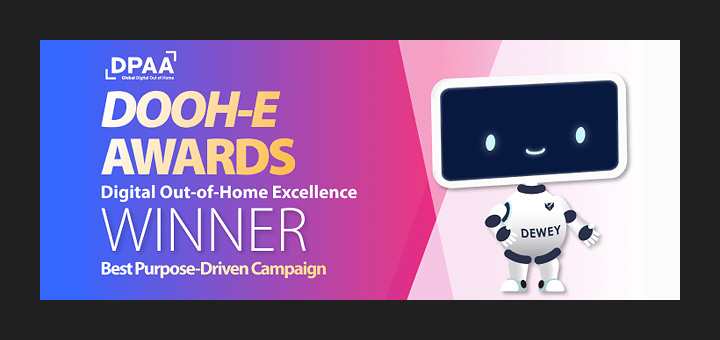Though cookie alternatives are out there, agencies have their issues with them all
By Antoinette Siu Image by Ivy Liu
As agencies get more serious about finding the right third-party cookie alternatives, they are running into challenges, both old and new.
Some of these include changes in audience size or measurement and standardization obstacles — and potentially even its own set of privacy questions. As Rio Longacre, managing director of advertising and marketing transformation of consultancy Slalom, noted, some of the cookieless solutions, like universal IDs, are leading to other privacy concerns.
“Some UIDs are inferred, using deterministic or probabilistic models that mash together information gleaned from various sources – including first-party cookies, mobile IDs, IP addresses and so on,” Longacre said. That mashup might not be clean from beginning to end, from a consent basis.
Here are other challenges Digiday is hearing right now:
First-party/zero-party data
First- and zero-party data are becoming more important as third-party cookies phase out, noted Hillary Kupferberg, vp of performance marketing at Exverus Media.
For example, its client Stella & Chewy’s used a chance for a photo shoot as a way to get customers to visit their local pet stores to collect zero-party data. More than 5,000 people went to stores for this contest and shared their personal and pet information, which turned into first-party data when they opted in for promo emails from the brand.
“This resulted in repeat visits and support of local retailers from the onslaught of big box stores,” said Kupferberg. “Cookie deprecation will not be without challenges, but those who see it as an opportunity will be the most successful.”
However, the smaller and medium brands or niche industry clients may face more limitations, said Tori Oh, client engagement director at Hylink Group. This may be due to “increased media expenditure and reduced bottom line” as they try to scale, “because businesses must invest more in media to expand their database.”
Additionally, Oh pointed to the travel and retail categories of clients being more difficult, because they have limited access to comprehensive first-party data resources. At the same time, even those with first-party data can find themselves with outdated information, fake accounts and inactive users.
Contextual targeting
While contextual targeting has been around as a way to tailor ads to content, it comes with unique challenges — one of which could be wasted impressions if the interest does not convert to purchasing intent.
“The sheer size of the consumer pool makes it difficult to effectively convert engagement into sales, unlike the more precise tracking currently facilitated by cookies,” Oh said. “This inefficiency means companies will likely need to increase their media spending to compensate for the more significant number of impressions required to reach their target consumers.”
Longacre agreed that contextual targeting is emerging as an alternative, but is limited in reach: “While more ad dollars will go to this format in coming months, there is no way contextual will replace programmatic… Contextual ads in the wrong context will not perform, so potentially this leaves a large performance gap for advertisers with lower ROAS.”
Audience scale
Part of the drawback to some of these personalization and targeting methods is a smaller audience size compared to pre-cookie deprecation.
“One of the biggest changes to the data landscape appeared with Apple’s iOS 14.5, which had users choose if they wanted to share their data freely with every app they used – and 90% of users chose not to share their data freely,” said Paul DeJarnatt, vp of digital at Novus Media.
Sara Owens, head of analytics and data science at Media Matters Worldwide, similarly noted that Apple’s changes already reduced the ability to track identity – with iPhones taking more than half the U.S. market share.
“On top of it, all the social media platforms have grown in terms of size and how much budget they get – and how much space they take up in our media plans,” Owens told Digiday.
In replacing cookies, many platforms’ own alternatives will also lead to more siloed environments and limit the overall view of audiences, buyers observed. Tech players, from Google to Amazon, are creating clean rooms to aggregate data – but “you can no longer stitch together a user’s journey across all their ad exposures,” said Owens.
Measurement and standardization
As a result of the siloed platforms and fragmented space, there will be ongoing measurement and standardization challenges. Amanda Ferrante, chief growth officer at Code3, said the lack of standardization in “tracking and user identification leads to fragmentation, which makes it impossible to implement consistent strategies across different platforms and browsers.”
Third-party cookies have also contributed to “flawed measurement and targeting,” said Kevin Joyner, director of data strategy at full-service digital agency Croud.
“Being able to report a user journey through ad impressions to a conversion does not reveal to what extent those impressions caused the conversion,” Joyner said. “Let’s worry less about personalized ad delivery and digital attribution – and more about customer relationships and proving the true incremental value of our ads with controlled testing and media mix modeling,”
And yet, traditional MMM, which uses aggregated data and not user data, can be expensive and time-consuming, Owens said. For the last two years, Media Matters Worldwide has instead been building a proprietary tool using machine learning, agile mix modeling, or AMM. Owens said it does MMM, but much faster.
While AI may not be the perfect answer to all the industry’s post-cookie challenges, it can perhaps help in the measurement and modeling aspect. As Owens put it, leveraging AI for lookalike modeling lets the agency make better “educated guesses … without AI, that’s limited to at best what kind of information a human can understand and then make a decision.”
Read More




